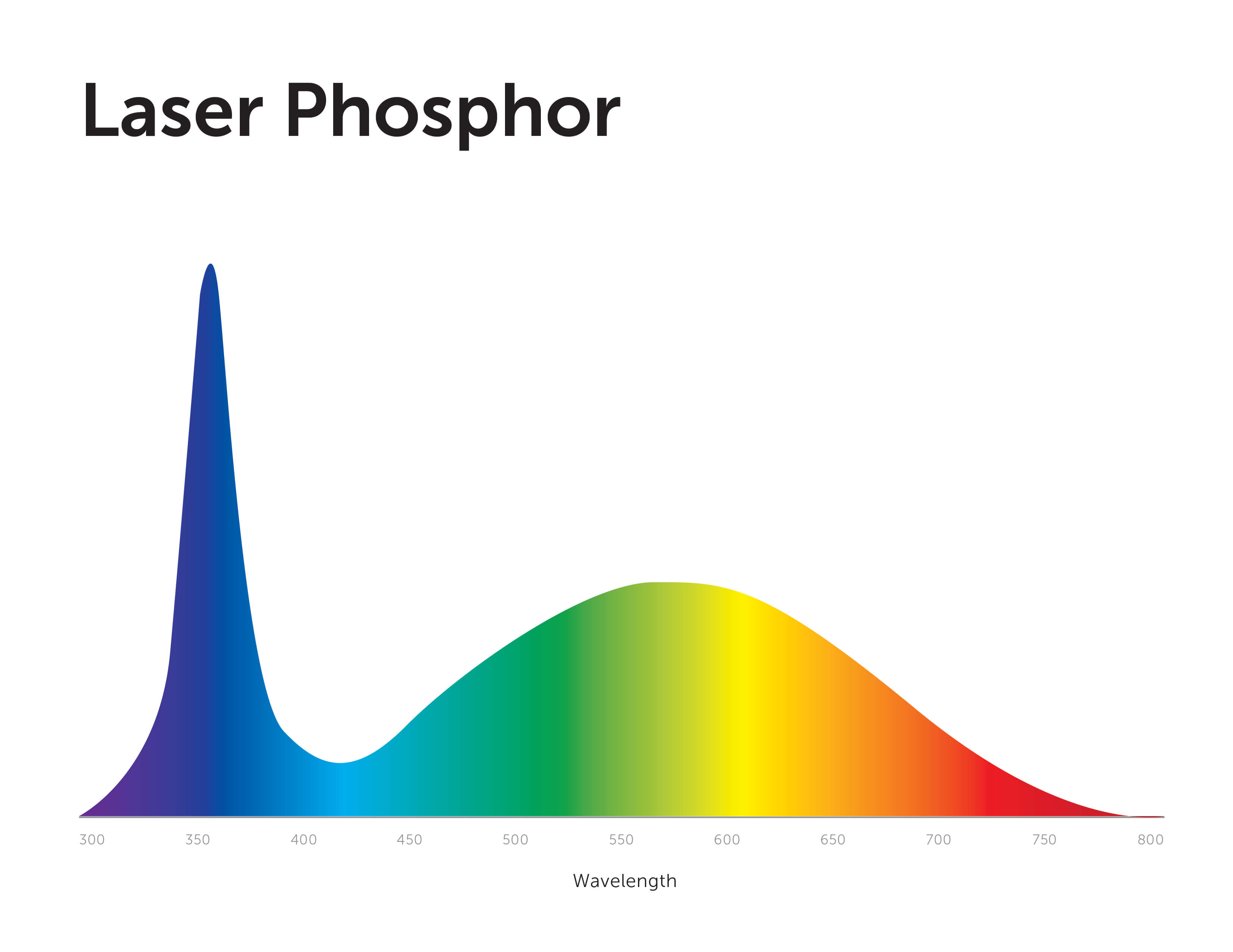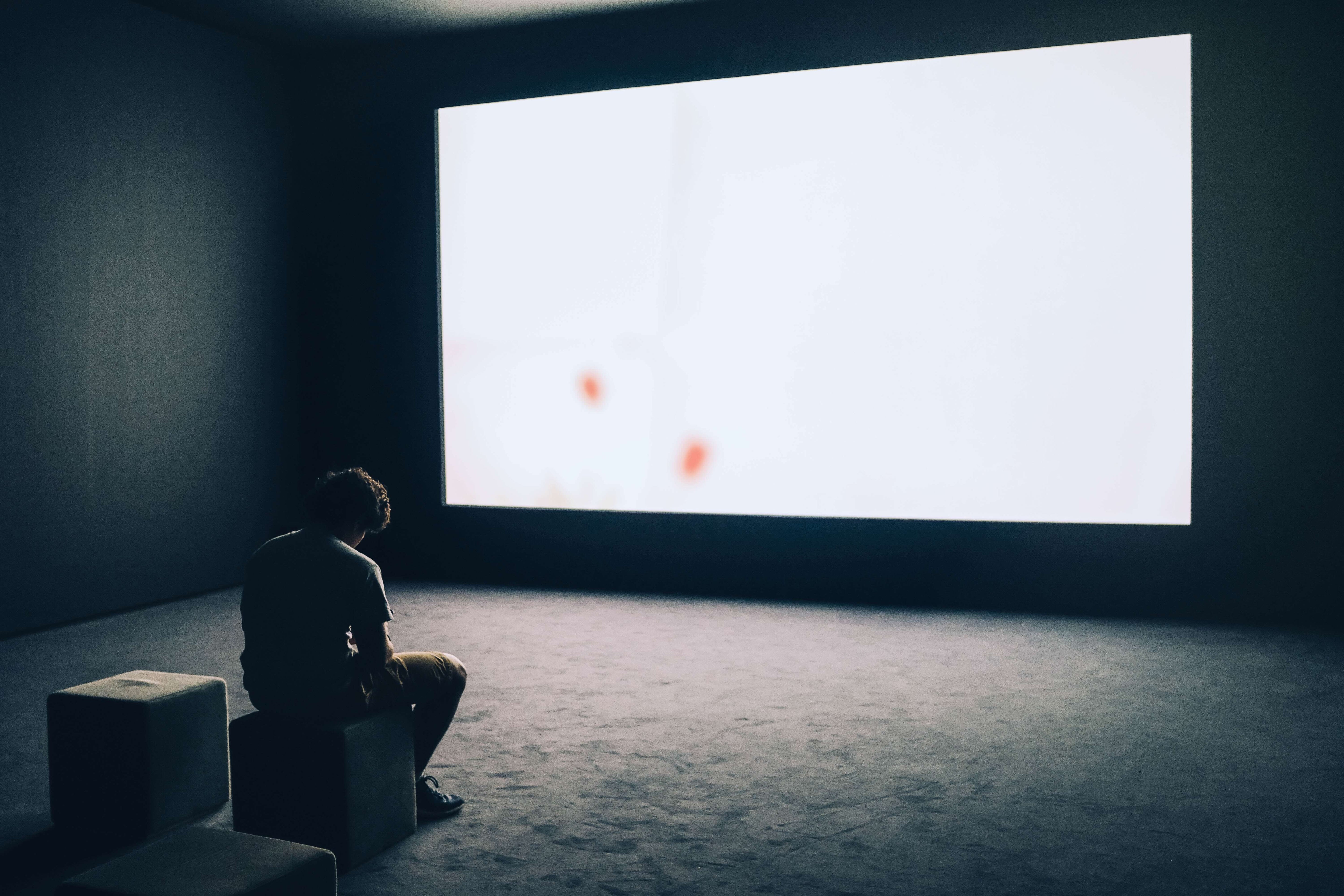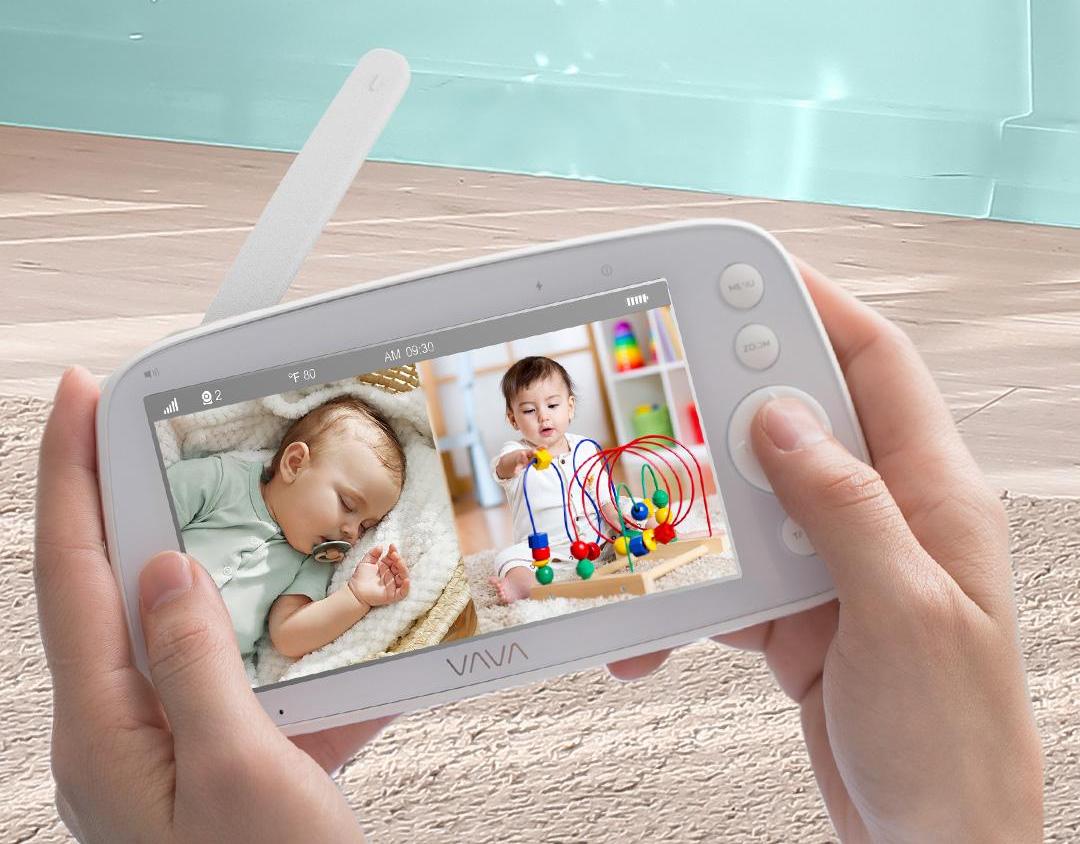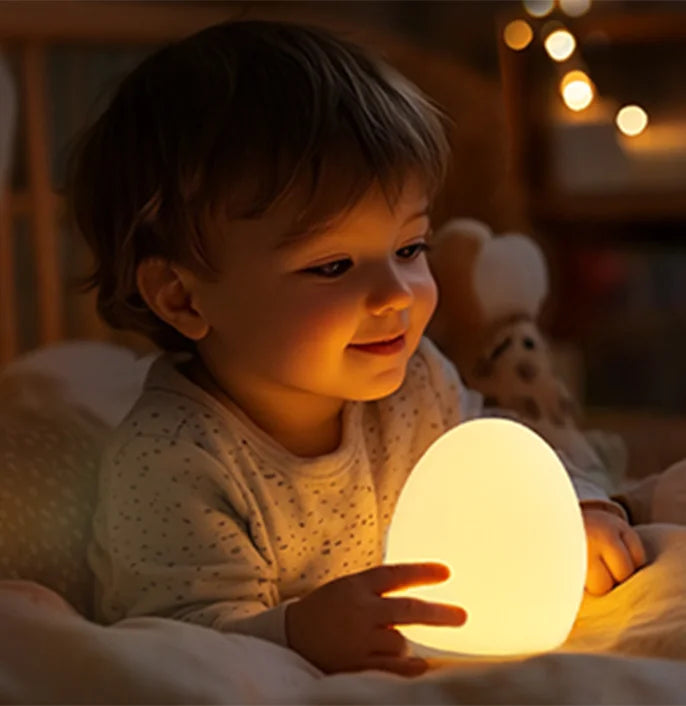Light is the most important element of any projection system. After all, without light, there can be no picture on the screen! And not just any light—all video images are created by combining only three colors of light: red, green, and blue. And not just any colors of red, green, and blue—very precise wavelengths of red, green, and blue are needed to accurately reproduce video images.
But where does that light come from? Virtually all projectors use one of three light sources: lamps, LEDs, or lasers.
What's the difference between these light sources, and why would you want one over the others? Let's find out...
Lamps
The most common and oldest light source in consumer projectors is a UHP (ultra-high-pressure) lamp. A UHP lamp emits broad-spectrum white light (see Fig. 1) that is filtered to isolate the red, green, and blue wavelengths used to reproduce video images.

Lamps have been used in projectors for decades, and they can be very bright, but they have several distinct limitations. For one thing, they are very inefficient; most of the light energy they generate is wasted. That's because the only wavelengths used to reproduce video images are narrow bands of red, green, and blue. All the other wavelengths are unused and must be prevented from getting into the projector's imaging system.
Also, lamps get very hot, requiring sophisticated heat management so the projector's internal components aren't damaged. In addition, they must warm up for a period of time before they can generate their maximum brightness and full range of colors, and they must cool down for a while before being shut off completely. If the power to a lamp is suddenly cut off, the lamp can be permanently damaged or destroyed.
Another limitation is lifespan. Most projector lamps have an estimated lifespan of less than 10,000 hours of use, and much less than that if the lamp is used at its brightest setting. As a result, lamps must be changed relatively often. For example, let's say a lamp's lifespan is 5000 hours. If it's used five hours per day, it would need to be replaced every 2.7 years.
That might not seem so bad, but during that time, the overall light output from the lamp diminishes steadily, and the picture gets dimmer and dimmer, requiring a new lamp well before the old one's actual end of life. Even worse, lamps for consumer projectors typically cost several hundred dollars. Plus, if your projector is mounted where it's not easily accessible, changing the lamp every year or so is a big pain in the neck.
LEDs
LEDs (light-emitting diodes) have recently evolved to become a viable light source in projectors. Because they only produce red, green, and blue light, LEDs are much more efficient than any lamp (see Fig. 2).

Some projectors, such as the LG CineBeam series, use separate red, green, and blue LEDs to illuminate the image. Other models, such as the BenQ HT9060 and HT9050, use a technology from Philips called HLD, in which blue LEDs are used to excite a phosphor rod to emit green light. That green light joins the light from additional blue LEDs as well as red LEDs to provide the right colors for a projector.
In addition to efficiency, another big advantage is longevity. Whereas lamps typically last a few thousand hours at best, LEDs last tens of thousands of hours. As a result, there's no need to replace an expensive lamp during the projector's lifetime.
Unlike lamps, LEDs can be turned on and off instantly, completely eliminating the need to warm up or cool down. Also, their brightness can be instantaneously and dynamically varied, or modulated, depending on how bright the image is, which can deepen blacks and greatly increase contrast.
The primary drawback of LEDs is lower brightness. The LG CineBeam models claim a peak brightness of 1500 lumens, while the BenQ HT9060 and HT9050 claim 2200 lumens. By contrast, lamp-based projectors can reach 3000 lumens and higher. And keep in mind that manufacturer brightness claims are often exaggerated, so the actual brightness is typically less than the specs indicate.
Another problem is that LEDs are often used in very inexpensive projectors with relatively poor performance, giving them a bad reputation. At the other end of the price scale, Digital Projection made some very high-end, high-performing LED-based models a few years ago, but the company has since largely abandoned that technology in favor of lasers.
Lasers
Lasers sit at the pinnacle of projector light-source evolution. They produce an extremely narrow range of wavelengths, making them far more efficient than any other light source (see Fig. 3). Plus, the wavelengths can be precisely tuned to reproduce a wider range of colors than lamps or LEDs.

A few consumer models, such as the Hisense TriChroma Laser TV, use separate red, green, and blue lasers. This type of light engine is also used in the commercial projectors found in Dolby Cinemas. However, using separate red, green, and blue lasers is generally very expensive.
Most laser-based consumer projectors use a different architecture in which blue lasers excite a phosphor coating on a spinning wheel. In most cases, the phosphor emits yellow light, which is then split into its green and red components. Along with blue laser light that does not pass through the phosphor wheel, this system provides the three colors needed to reproduce video imagery. On the downside, this type of laser-phosphor hybrid system is not as efficient as a pure red-green-blue laser light engine (see Fig. 4).

A slightly different laser-based architecture is used in the VAVA 4K Laser Projector. In that model, the light from an array of blue lasers passes through a spinning color wheel with segments of red, green, and blue phosphor as well as red, green, and blue color filters.
Like LEDs, lasers have a very long lifespan, typically tens of thousands of hours, but they offer higher brightness. For example, the VAVA 4K Laser Projector specifies a peak brightness of 2500 lumens. They can also be turned on and off instantly, and their brightness can be quickly modulated to deepen blacks and increase contrast.
Clearly, lasers are the ultimate light source for projectors. They offer the best of lamps and LEDs—high brightness, long lifespan, high efficiency, wide color gamut, instant on/off, and dynamic modulation—without the drawbacks of the other light sources. And as lasers become more commonplace in consumer projectors, their cost will drop, bringing their advantages to a wider audience.
TL;DR—Pros and Cons of Lamps, LEDs, and Lasers






Share: